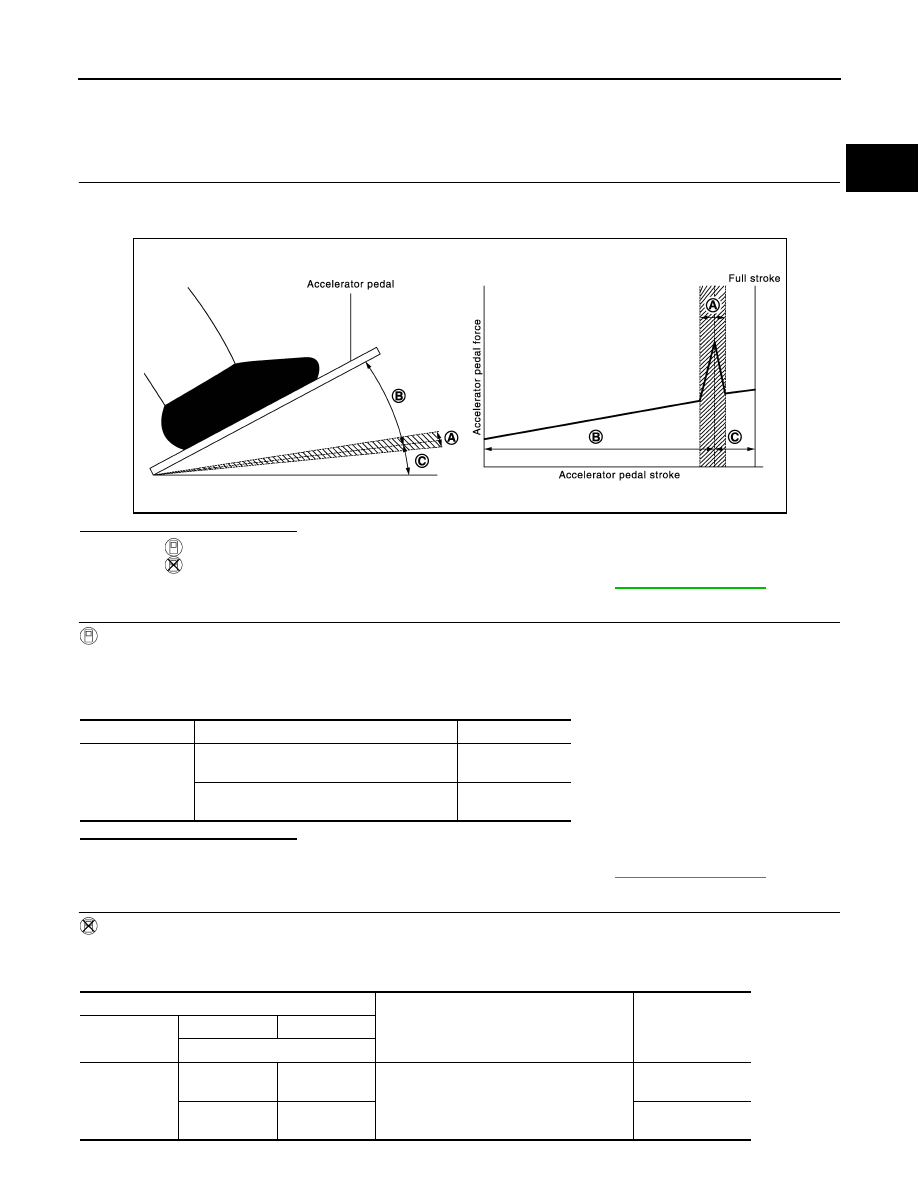Nissan Juke F15. Manual - part 489

ACCELERATOR PEDAL
EC-769
< BASIC INSPECTION >
[MR EXCEPT FOR NISMO RS MODELS]
C
D
E
F
G
H
I
J
K
L
M
A
EC
N
P
O
ACCELERATOR PEDAL
Work Procedure
INFOID:0000000012198280
1.
PERFORM ACCELERATOR PEDAL FORCE-I
1. Turn ignition switch OFF.
2. Depress the accelerator pedal and check if there is a specific point (A) in the pedal stroke where the pedal
force increase as shown in the figure.
Is the inspection result normal?
YES-1 >>
With CONSULT:GO TO 2.
YES-2 >>
Without CONSULT:GO TO 3.
NO
>> Perform Accelerator Pedal Released Position Learning. Refer to
.
2.
PERFORM ACCELERATOR PEDAL FORCE-II
With CONSULT
1. Turn ignition switch ON.
2. Select “KICKDOWN POS” in “DATA MONITOR” mode using CONSULT.
3. Check “KICKDOWN POS” indication under the following condition.
Is the inspection result normal?
YES
>> INSPECTION END
NO
>> Perform Accelerator Pedal Released Position Learning. Refer to
.
3.
PERFORM ACCELERATOR PEDAL FORCE-III
Without CONSULT
1. Turn ignition switch ON.
2. Check the voltage between ECM harness connector and ground under the following conditions.
JMBIA1519GB
Monitor item
Condition
Indication
KICKDOWN POS
Depressing range of the accelerator pedal:
Within (B) as indicated in the figure
OFF
Depressing range of the accelerator pedal:
Within (C) as indicated in the figure
ON
ECM
Condition
Voltage
(Approx.)
Connector
+
–
Terminal
E19
150
(APP sensor 1)
151
Depressing range of the accelerator pedal:
Within (C) as indicated in the figure
3.9 - 4.7 V
143
(APP sensor 2)
144
1.95 - 2.4 V